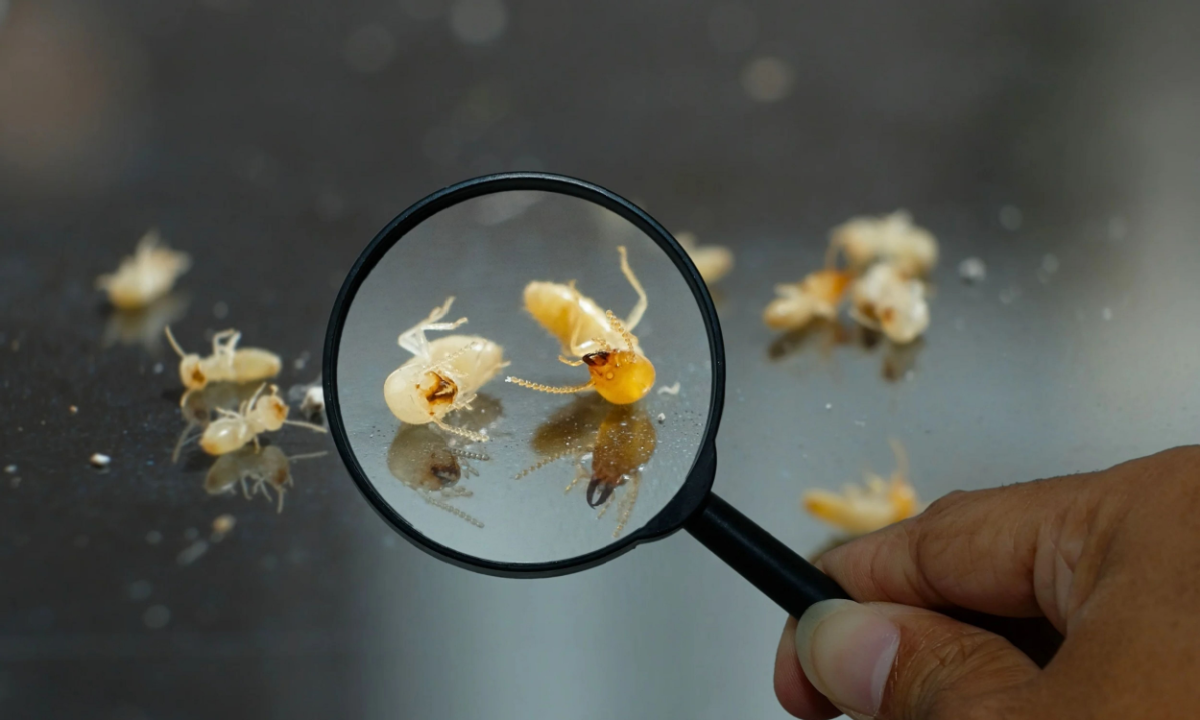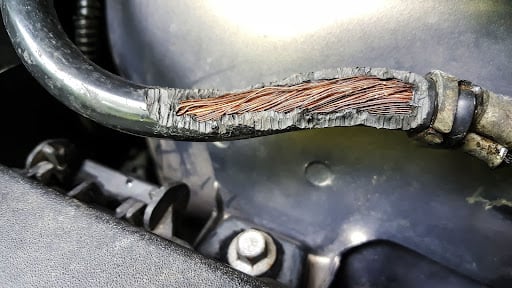With an estimated $30 billion in damage caused by termites annually, termite treatment is a very important part of protecting your home and your health.
Unfortunately, termites can act fast on homes, as the average-sized colony devours up to 5 grams of wood per day.
Dire situations call for drastic solutions, and in the event of a severe termite infestation, there’s no treatment too aggressive. You’ll likely hear several words passed around when discussing termite infestations with a professional pest control expert, including termiticides, but how safe are they and are they right for you?Request a Free, No-Obligation Quote
Request a Free, No-Obligation Quote
What Are Termiticides?
Termiticides are chemical agents engineered for the extermination of termites.
While these chemicals take several forms, most use the same general active ingredients, such as Fipronil. This slow-acting chemical interferes with the termite’s central nervous system, causing death in approximately 24-36 hours after consumption/exposure.
Termiticides are commonly used by pest control experts across the country, stopping termite infestations in their tracks and preventing future infestations for approximately three months.
What Is the Best Chemical to Kill Termites?
As stated previously, the most common termiticide is Fipronil. This common insecticide is found in everything from Terminix to pet flea medications and is effective at treating several insects, such as fleas, woodworms, ants, and beetles.
This chemical works when termites come into contact with or ingest it, causing severe disruptions of the insect’s nervous system. Due to the slow release of the product (24-36 hours) and termites’ colonial behavior, the chemical is often spread from contaminated insects to other members of the colony, resulting in mass extermination in around two days.
Treatments containing fipronil can be found at most major hardware stores, making this termiticide both effective and easily accessible.
Fipronil can be mildly toxic for humans, especially if ingested or if people come into close contact.
Several other termiticides may be used to treat termites, including:
- Arsenic trioxide: This treatment is applied to wood and can kill most insects.
- Permethrin: This is commonly used for termites in tree stumps.
- Imidacloprid: This chemical targets the nervous system and is not considered very toxic to humans.
- Bifenthrin: This preventative chemical can be used to treat the wood barrier of homes for a certain time period.
Is Termiticide Harmful to Humans?
In most cases, termiticides are harmful to humans and should be used with extreme caution. Fipronil-based products are no exception, with the side effects of ingestion including headache, nausea, vomiting, abdominal pain, tonic-clonic seizures, and even death, depending on the severity of the poisoning.
For this reason, termiticides are best handled by professionals or experienced individuals.
Furthermore, chemical treatments should not be used near pets, children, or other humans to prevent the risk of exposure and poisoning. For further questions regarding fipronil treatments, feel free to contact your trusted local pest control experts.
Request a Free, No-Obligation Quote
How Does Termiticide Treatment Work?
Termiticide treatments containing fipronil all work in the same general way–disrupting the termite’s central nervous system, eventually leading to death.
However, several different forms of termiticides are available. The most common forms of termiticides are foams and liquids applied in precise locations rather than sprayed so as not to waste the chemical or spread it to unnecessary locations.
Direct Soil Applications
Depending on the type and extent of your termite infestation, pest experts may apply a termiticide directly into the ground using a series of injection rods and a high-pressure pump. This method is most effective with subterranean termites, pumping the chemical straight into the soil near the colony to eradicate the infestation at the source.
Direct Wood Applications
A pest expert will drill small holes into the infested wooden structure approximately every 10 inches in dry wood termite infestations. Once a path is created, the pest professional will inject the same liquid or foam solution directly into the wood, killing the termites that come into contact with the chemical directly or those that consume the termiticide-soaked wood.
Bait Stations
Another means of termite control are bait stations: hollow tubes inserted into the ground approximately 2-4 feet from foundations and no more than 20 feet apart. These tubes feature open sides, allowing subterranean termites to build tunnels into and around the bait stations.
Pest experts will monitor the presence of termites and place baits in select stations with notable activity. Once the insects pass through the bait stations, they transfer the termiticide to other colony members, slowly wiping out the colony.
How Fast Does a Termiticide Treatment Work?
Termiticides are slow-acting chemicals, with direct contact taking anywhere from 24-36 hours. In instances where termiticide-laced bait stations are used. Full eradication can take up to 6 months as a pest expert continually monitors the stations and size of the colony.
How to Get Rid of Termites Permanently
Professional Treatment
Handling termites takes time and effort, so be diligent. Professional assistance is often needed as termite infestations are one of the more difficult pests to eradicate. Additionally, termite infestations can cause severe structural damage if left unchecked, leading not only to extermination efforts but structural repairs.
There are several ways that professional pest control experts may treat a termite-infested home, including:
- Fumigation
- Localized termiticide treatment
- Bait station installation and monitoring
- Chemical barriers
- Physical barriers
Prevention
Once a termite infestation is eradicated, it’s important to take ample preventative measures to ensure a termite-free home for the long run. Aside from professional prevention methods, such as spraying the foundation with a termiticide repellant or installing a physical barrier, there are several ways that you can make your home less termite-friendly. These practices include:
- Reducing wood-ground contact
- Limiting mulch usage
- Keeping crawlspaces and basements dry
- Storing firewood and wooden debris away from your home’s siding and foundation
- Divert moisture and gutters away from the foundation
- Be observant
Quick Q&A Recap
What is a termiticide?
Hailing from the root words terme and cis, meaning “white ant” and “to kill” respectively, Termiticides are termite-killing chemicals engineered to eradicate active infestations. These chemicals, such as fipronil, damage the termite’s nervous system, eventually killing the insect after contact or ingestion.
Are termiticides toxic to humans?
Yes, most termiticides are effectively neurotoxins. While they are more effective at harming insects, accidental poisoning from ingestion can have serious adverse health effects, ranging from nausea and vomiting to death. As such, it’s important to use termiticides sparingly and in low-traffic areas.
How are termiticides applied?
Termiticides are applied locally to affected areas so as not to waste the chemical and to reduce the risk of human or animal contact. Generally, professionals utilize a high-pressure pump and a series of nozzles to apply the termiticide directly to the affected soil or wood, killing any termites that come into contact with the chemical or consume termiticide-soaked wood. Termiticides may also be used in bait stations buried in the soil around your home’s foundation, slowly wiping out the colony.




